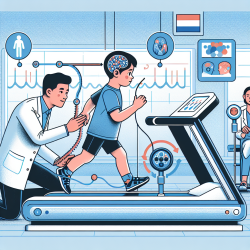Introduction
In the realm of speech-language pathology, the integration of hypnosis as a therapeutic tool has been a subject of considerable interest. The recent theoretical review titled "Exploring the Role of Conscious and Unconscious Processes in Hypnosis" provides valuable insights into the complex interplay between conscious and unconscious mechanisms during hypnosis. This blog aims to highlight key findings from the review, offering practitioners actionable strategies to enhance their therapeutic skills and encouraging further exploration of hypnosis in clinical practice.
Understanding the Unconscious "Gatekeeper"
A central theme in the review is the role of the unconscious as a "gatekeeper" that modulates the hypnotic experience. This concept underscores the importance of understanding how unconscious processes shape and regulate the flow of information between conscious and unconscious realms. By recognizing the unconscious as an active participant in hypnosis, practitioners can better appreciate the complexity of hypnotic phenomena and tailor their approaches accordingly.
Implications for Practitioners
Practitioners can leverage the insights from this review to enhance their therapeutic skills in several ways:
- Embrace the Dynamic Interplay: Understanding the dynamic interplay between conscious and unconscious processes allows practitioners to create more effective therapeutic interventions. By acknowledging the unconscious "gatekeeper," practitioners can tailor their suggestions and techniques to align with the client's unconscious motivations and needs.
- Foster a Collaborative Therapeutic Relationship: The review emphasizes the importance of the therapist-client relationship in accessing and manipulating unconscious processes. Practitioners should focus on building rapport and trust with their clients, creating a safe and supportive environment for exploring unconscious material.
- Explore Neurocognitive Models: The review highlights various neurocognitive models that offer insights into the brain's functioning during hypnosis. Practitioners can benefit from familiarizing themselves with these models to better understand the neural mechanisms underlying hypnotic experiences.
Encouraging Further Research
While the review provides a comprehensive examination of existing theories, it also highlights the need for further research into the mechanisms of the unconscious "gatekeeper" role. Practitioners are encouraged to engage in ongoing research and exploration to deepen their understanding of hypnosis and its applications in clinical practice. By staying informed about the latest developments in hypnosis research, practitioners can continue to refine their skills and contribute to the advancement of the field.
Conclusion
The theoretical review on hypnosis offers valuable insights into the interplay between conscious and unconscious processes. By embracing these insights, practitioners can enhance their therapeutic skills and create more effective outcomes for their clients. As we continue to explore the complexities of hypnosis, it is essential for practitioners to remain curious and open to new research and developments in the field.
To read the original research paper, please follow this link: Exploring the Role of Conscious and Unconscious Processes in Hypnosis: A Theoretical Review.










